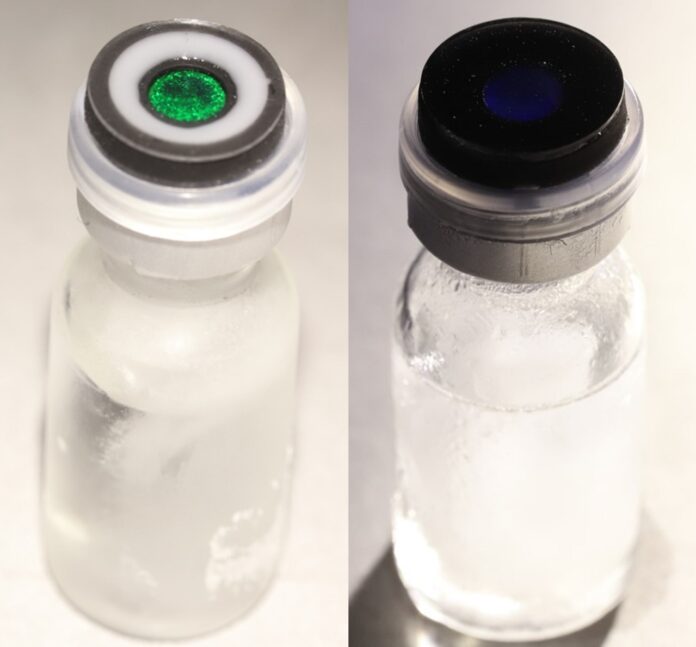Structural color liquids can be used to indicate time-temperature changes.
Vaccines are a powerful weapon in the fight against global pandemics, as demonstrated in the recent COVID-19 case. However, they often need help with reliable cold-chain transport. Current time-temperature indicators (TTIs) need more reliability and stability, such as difficulty avoiding human intervention, inapplicability to subzero temperatures, narrow tracking temperature ranges, or photobleaching.
Researchers describe a class of clearly colored microcrystals in materials that become colorless over a wide temperature and reaction time range. The researchers packed the color-changing materials into a vial cover and a QR code as proof of concept.
Recently, researchers suggested using visual indicators as materials to give this information with less waste. However, some current solutions that use vivid reactions or dyes generate fading hues. Or they only track temperatures above freezing, which is ineffective for some COVID-19 vaccinations, which can begin breaking down below freezing – above -4 or -94 degrees Fahrenheit.
Wireless temperature sensors can monitor specific products. However, they generate a lot of electronic waste. Yadong Yin, Xuemin Du, and colleagues wanted to create a more effective color-changing material with programmable melting to track various temperatures.
The researchers created glycerol-coated silicon dioxide nanoparticles that clustered together to form microcrystals in water.
They then mixed different quantities of polyethylene glycol or ethylene glycol with water to make liquids with variable melting points. The American Chemical Society (ACS) is a non-profit organization created by the United States Congress to advance the chemical enterprise and its practitioners for the benefit of the Earth and all its people.
Through its many research solutions, peer-reviewed journals, scientific conferences, eBooks, and monthly news magazine Chemical & Engineering News, it is a global leader in fostering excellence in science education and offering access to chemistry-related information and research. Although ACS journals are among the most cited, reputable, and read in the scientific literature, the ACS does not perform chemical analysis.
The materials may be customized to track temperature exposures ranging from -94 to +99 degrees Fahrenheit for periods ranging from a few minutes to many days. The two-part indication systems were bundled into flexible round vial labels with a QR code in further tests.
These systems were extremely sensitive and successfully alerted when the materials became too hot. According to the researchers, structural color-changing materials have the potential for various circumstances experienced in medical cold supply chains.
The study was funded by the National Natural Science Foundation of China.



